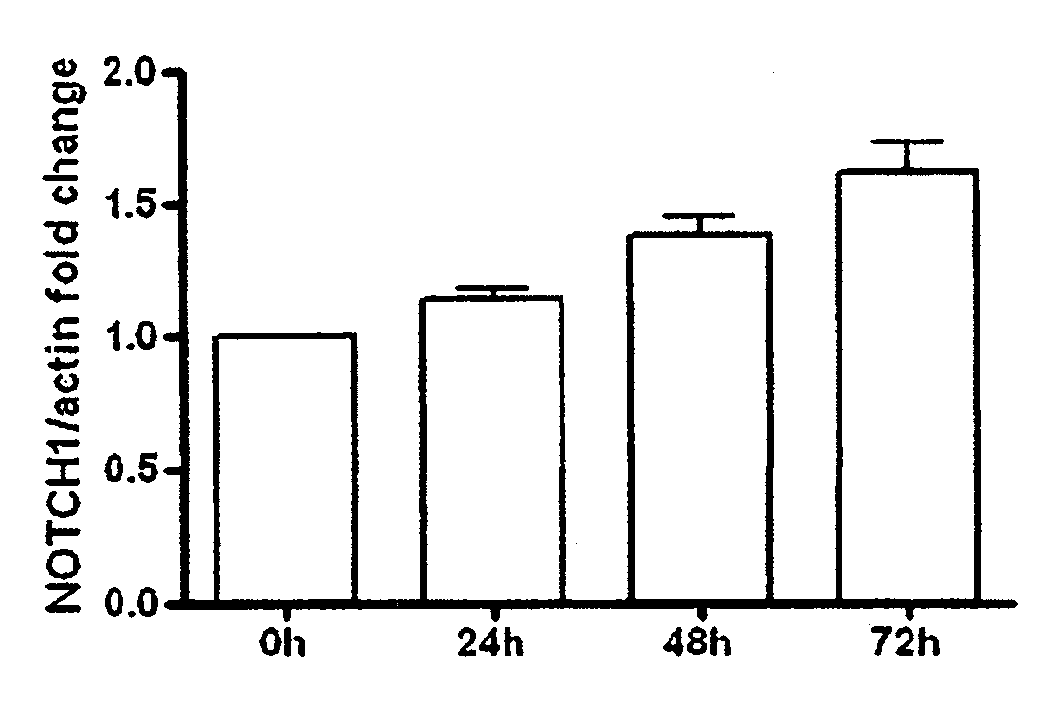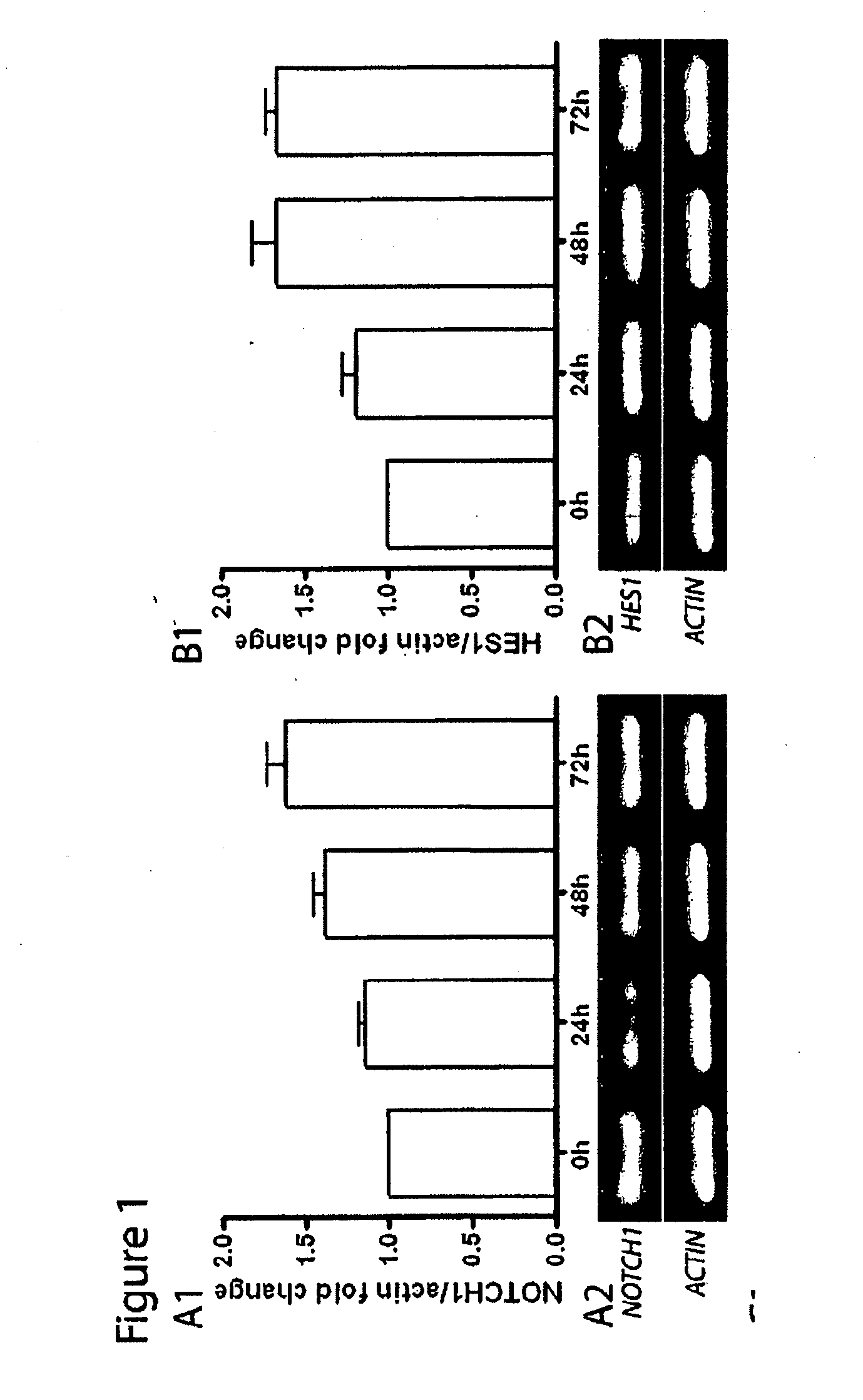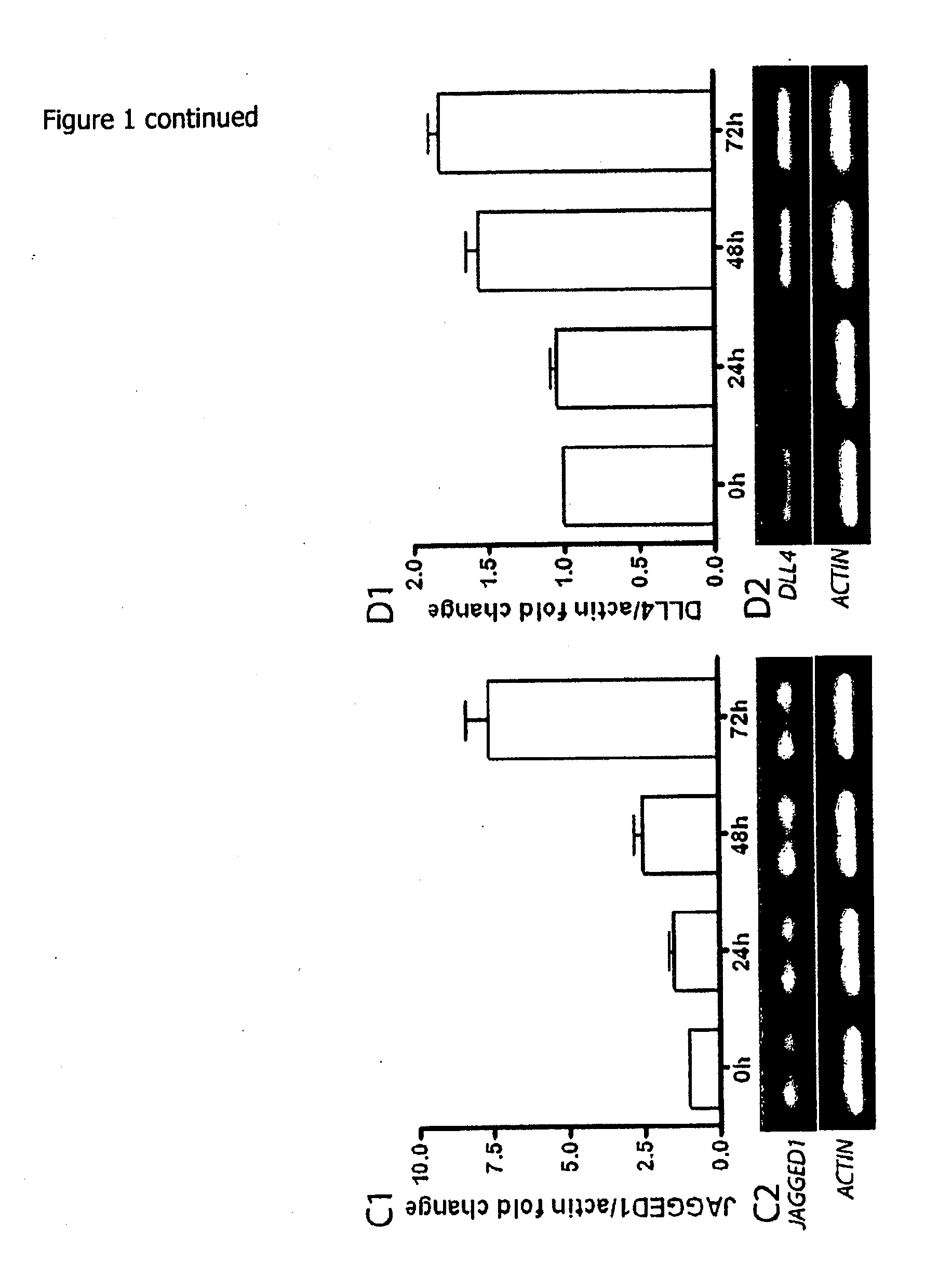Method for generating islet beta cells from dedifferentiated exocrine pancreatic cells
a technology of exocrine pancreatic cells and islet beta cells, which is applied in the direction of artificial cell constructs, biocide, drug compositions, etc., can solve the problems of inability to produce insulin, chronic insulin deficiency, excessive thirst, etc., and achieve the effect of reducing the expression of notch1 and reducing the need for insulin substitution
- Summary
- Abstract
- Description
- Claims
- Application Information
AI Technical Summary
Benefits of technology
Problems solved by technology
Method used
Image
Examples
example 1
Experimental Procedures
[0176]Animals
[0177]Male 10-12 week old Wistar rats (Charles River Laboratories) weighing 250-300 g were used for the isolation of cells from the pancreas. Pancreata were partially dissociated with collagenase and exocrine acini were purified by centrifugal elutriation as published before (Rooman et al., 2000 Diabetologia 43:907-914). All animal experimentation was approved by the Ethical Committee of the Free University of Brussels.
[0178]In Vivo Injections
[0179]Wheat Germ Agglutinin, coupled to Fluorescein-iso-thio-cyanate (FITC) (Invitrogen S.A.) was micro-injected directly into the pancreatic parenchyma at a dose of 150 mg / kg body weight. This dose was dissolved in 350 μl physiological fluid (Baxter S.A.) and injected at multiple loci in the pancreatic head and tail sections. The lectin was given 72 h before isolating the different cell types to allow binding to its target N-acetyl glucosamine and internalization in cytoplasmic storage compartments.
[0180]Cel...
example 2
Inhibition of Notch Signaling Promotes the Acinar-to-Beta Cell Reprogramming
[0208]It was previously documented the transient re-expression of the pro-endocrine transcription factor Ngn3 in rat acinar cell cultures stimulated with EGF and LIF, which typically occurs in about 9% of the cells. In pancreas organogenesis the number of Ngn3+ endocrine precursors is limited by the lateral specification through interaction of Delta-like ligands (Dll) with the Notch1 receptor. It was examined whether re-activation of this signaling pathway might act as a limiting factor for in vitro beta cell neogenesis from adult acinar cell cultures. EGF / LIF-treated acinar cell cultures contained high levels of mRNA encoding Notch1 (FIG. 1A) and its target Hes1 (FIG. 1B), transcript levels of the ligands Jagged1 and Dll4 (FIGS. 1C and 1D) over a period of 72 h, and also a marked expression of the Hes1-inhibitor Hes6 after 24 h (FIG. 1E). Protein expression of the active intracellular domain of Notch1 (Notc...
example 3
The Newly Formed Beta Cells are of Acinar Origin
[0218]Combined EGF, LIF and Notch1-EC treatment resulted in 30% of the cells adopting a beta cell phenotype, compared to 0.5% in control conditions (FIG. 2). However, the acinar origin of these cells still needs to be demonstrated. To achieve this goal we set up a non-genetic lineage tracing system based on the use of fluorescent lectins. Fluorescent Wheat Germ Agglutinin (WGA), that binds to N-acetyl glucosamine, exclusively expressed on acinar cells in the pancreas, was micro-injected directly into the pancreatic parenchyma at multiple sites. Lectin binding and internalization was allowed for 72 h and animals were sacrificed for microscopical analysis. WGA fluorescence was found in the cytoplasm of acinar cells only and was never observed in other cell types like centroacinar, duct or islet cells (FIGS. 4A and 4B, FIG. 9A). Collagenase digestion of the pancreas and subsequent cell isolation confirmed the WGA specificity as about 60% ...
PUM
 Login to View More
Login to View More Abstract
Description
Claims
Application Information
 Login to View More
Login to View More - R&D
- Intellectual Property
- Life Sciences
- Materials
- Tech Scout
- Unparalleled Data Quality
- Higher Quality Content
- 60% Fewer Hallucinations
Browse by: Latest US Patents, China's latest patents, Technical Efficacy Thesaurus, Application Domain, Technology Topic, Popular Technical Reports.
© 2025 PatSnap. All rights reserved.Legal|Privacy policy|Modern Slavery Act Transparency Statement|Sitemap|About US| Contact US: help@patsnap.com



